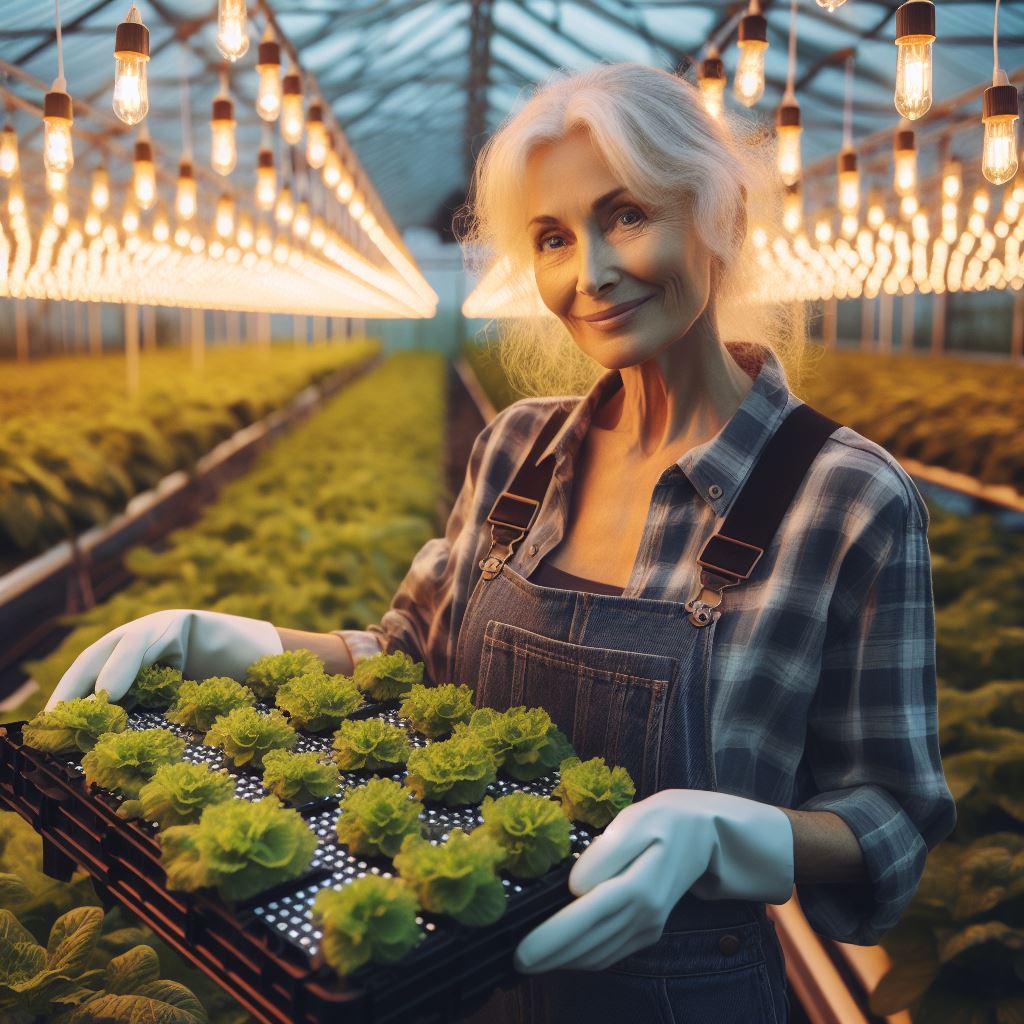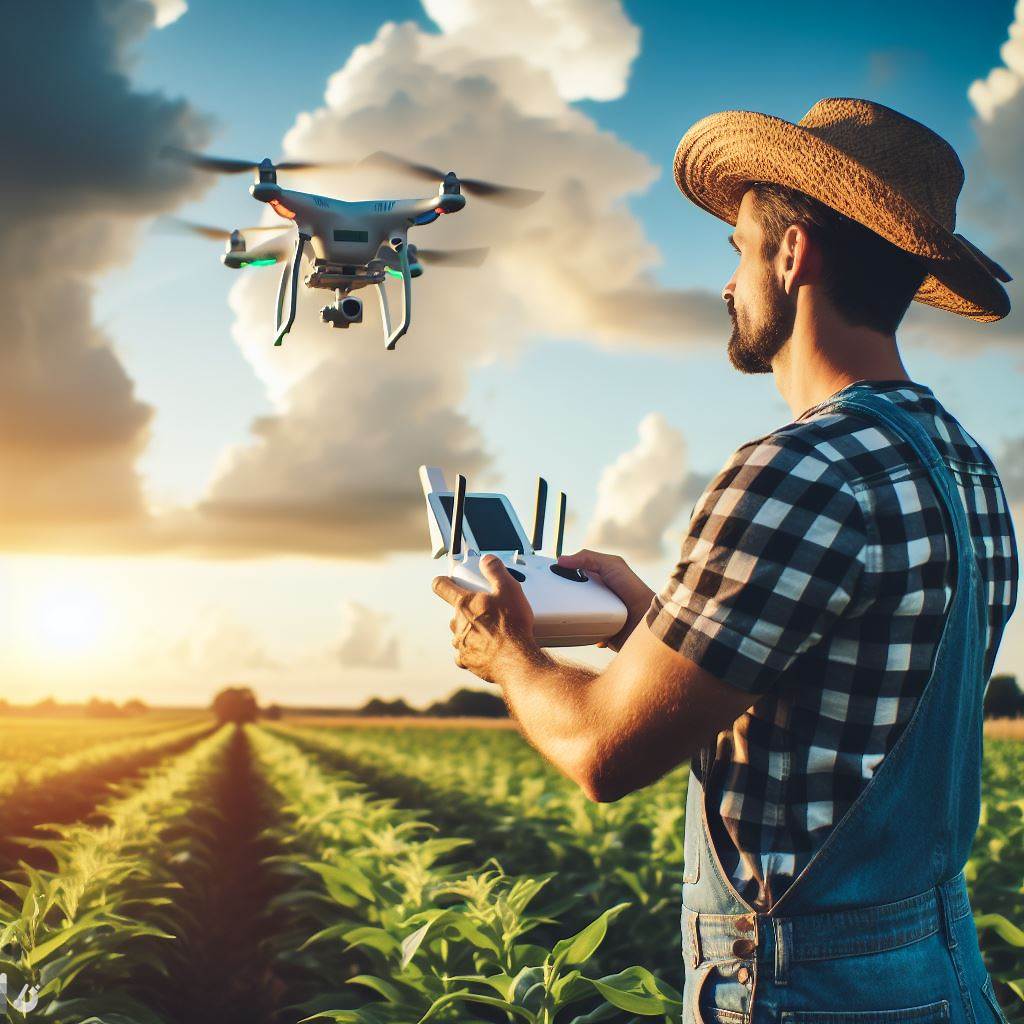Introduction
LED technology has become an indispensable tool in the realm of greenhouse cultivation.
It has transformed the way plants are grown, offering numerous advantages over traditional lighting systems.
In this blog post, we will delve into the importance of LED technology and its purpose in greenhouse cultivation.
LEDs have gained popularity as an efficient and sustainable lighting option for greenhouse cultivation.
They emit specific wavelengths of light that can be optimized for plant growth, resulting in increased crop yield and improved quality.
This targeted light spectrum provides plants with the exact amount and intensity of light they need, enhancing photosynthesis and overall plant health.
Moreover, LED technology offers energy-saving benefits.
With its low energy consumption, LED lighting minimizes electricity costs for greenhouse growers.
This, coupled with its long lifespan, makes LEDs a cost-effective and environmentally friendly alternative to traditional lighting systems.
In addition to the energy efficiency and cost-saving advantages, LED technology allows growers to have better control over environmental conditions.
LEDs can be easily adjusted to provide different light intensities, colors, and durations, thus enabling precise manipulation of plant growth processes.
This versatility enables year-round cultivation, independent of seasonal variations or geographic locations.
Basically, LED technology has revolutionized greenhouse cultivation by providing a sustainable, energy-efficient, and customizable lighting solution.
By harnessing the power of LEDs, growers can optimize plant growth, increase productivity, and contribute to a greener future in agriculture.
Benefits of LED Technology in Greenhouse Cultivation
When it comes to greenhouse cultivation, using LED technology has numerous benefits.
Transform Your Agribusiness
Unlock your farm's potential with expert advice tailored to your needs. Get actionable steps that drive real results.
Get StartedIn this section, we will explore the advantages of LED technology in greenhouse cultivation.
Energy efficiency
The benefits of LED technology in greenhouse cultivation are evident.
Its energy efficiency not only reduces costs but also helps create a sustainable and environmentally friendly cultivation process.
LED lights allow for precise control over light spectrum and intensity, giving growers the ability to optimize plant growth.
Additionally, the longevity and durability of LED lights save money in maintenance and replacement costs.
By replacing traditional lighting systems with LED technology, greenhouse cultivators can enhance their cultivation practices and achieve higher crop yields.
The lower energy consumption of LED lights not only benefits the growers but also helps reduce the overall carbon footprint of greenhouse operations.
Precision and control
LED lights are known for their efficiency in converting electricity into light.
The specific wavelengths emitted by LEDs can be tailored to meet the exact needs of different plants during various stages of growth.
This precision allows growers to provide the ideal conditions for their crops, maximizing their productivity and quality.
Longevity and durability
Furthermore, LED lights have a longer lifespan compared to traditional bulbs, which often require frequent replacements.
The reduced maintenance and replacement costs associated with LED lights contribute to cost savings for greenhouse cultivators.
In essence, the advantages of LED technology in greenhouse cultivation are significant.
Its energy efficiency, precision, and control over light spectrum, as well as its longevity and durability, make it an ideal choice for growers.
As the demand for sustainable and efficient agricultural practices continues to grow, LED technology proves to be a valuable tool in greenhouse cultivation.
Read: Data Analytics in Modern Farming
Applications of LED Technology in Greenhouse Cultivation
In recent years, the use of LED technology in greenhouse cultivation has gained significant attention due to its numerous advantages and applications.
LED lights have revolutionized the way plants are grown by providing specific light spectrums that promote healthy growth and maximize productivity.
Seedling production
A major application of LED technology in greenhouse cultivation is seedling production.
LEDs offer the necessary light spectrum required for seedling development, ensuring that they receive the right amount and quality of light for optimal growth.
Additionally, LEDs enhance root growth and overall plant vigor, leading to robust and healthy seedlings.
Vertical farming
Vertical farming is another area where LEDs have proven to be highly beneficial.
By utilizing vertical racks and strategically placing LED lights, growers can maximize crop yield even in limited spaces.
This innovative technique is particularly valuable in urban environments, where land scarcity makes traditional farming challenging.
Showcase Your Farming Business
Publish your professional farming services profile on our blog for a one-time fee of $200 and reach a dedicated audience of farmers and agribusiness owners.
Publish Your ProfileLED technology in vertical farming enables farmers to cultivate a variety of crops in a compact and efficient manner.
Supplemental lighting
Supplemental lighting is yet another significant application of LED technology in greenhouse cultivation.
LEDs can provide artificial light during periods of low natural light, extending the growing season and allowing crops to thrive.
This is particularly crucial in regions with harsh winters or areas where sunlight is limited.
With LED supplemental lighting, farmers can maintain optimal conditions for plant growth throughout the year.
Advantages of LED technology
Moreover, LED technology offers several advantages over traditional lighting systems in greenhouse cultivation.
LEDs are energy-efficient, consuming less electricity while producing a higher output of light.
This not only reduces energy costs but also minimizes environmental impact.
LED lights have a longer lifespan compared to traditional bulbs, resulting in reduced maintenance and replacement costs.
Additionally, LEDs emit less heat, allowing growers to position lights closer to plants without the risk of overheating or damaging them.
LED technology also provides excellent control over light intensity and spectrum, allowing growers to tailor the lighting conditions based on the specific needs of different crops.
By adjusting the light spectrum, LED lights can promote desired plant characteristics such as faster growth, increased yield, and improved flavor or aroma.
In a nutshell, LED technology has revolutionized greenhouse cultivation by offering numerous applications and advantages.
From seedling production to vertical farming and supplemental lighting, LEDs provide the necessary light spectrum for healthy plant growth, maximize crop yield in limited spaces, and extend the growing season.
As LED technology continues to advance, it is expected to play an increasingly important role in sustainable agriculture and food production.
Read: Water Tech in Controlled Ag Environments
Considerations for Implementing LED Technology in Greenhouses
Implementing LED technology in greenhouses requires careful considerations to ensure its effectiveness and maximize its benefits.
In this section, we will discuss the important factors to consider when incorporating LED lighting systems in greenhouse cultivation.
Initial investment and cost analysis
To successfully implement LED technology, it is crucial to calculate the return on investment (ROI) for the LED lighting systems.
This analysis helps determine the financial viability of the project.
Additionally, one must weigh the long-term benefits against the initial costs to make an informed decision.
Lighting system design and layout
The design and layout of the lighting system play a significant role in achieving optimal results.
Proper positioning and spacing of the LED lights are essential to ensure even light distribution throughout the greenhouse.
This promotes equal growth and development of the plants.
Moreover, maximizing plant coverage and minimizing shadowing are crucial for the consistent and uniform growth of crops.
Light spectrum and intensity optimization
Different crops have specific lighting needs for optimal growth.
Understanding these requirements is crucial to provide the right light spectrum and intensity.
LED technology offers flexibility in adjusting these parameters, ensuring that the plants receive the necessary wavelengths of light for photosynthesis and other physiological processes.
Choosing the right LED bulbs or panels that provide the ideal spectrum and intensity is vital for achieving desired growth and yield.
By considering these aspects, greenhouse cultivators can make informed decisions when implementing LED technology.
The initial investment and cost analysis help determine the financial feasibility of the project, considering both short-term and long-term benefits.
Additionally, designing the lighting system with proper positioning and spacing ensures consistent and even light distribution, maximizing plant growth throughout the greenhouse.
Finally, optimizing the light spectrum and intensity based on crop-specific needs promotes healthy growth and higher yield.
The benefits of LED technology in greenhouse cultivation are undeniable, such as energy efficiency, longer lifespan, and customizable light output.
However, it is crucial to carefully consider these factors to make the most out of this technology.
With proper planning and implementation, LED lighting systems can revolutionize greenhouse cultivation by providing an efficient and effective solution for optimal plant growth.
Read: Hydroponic Systems: Tech Advances

Gain More Insights: Agri IoT: Smart Solutions for Farmers
Explore Further: AI’s Role in Modern Farming Techniques
Success Stories and Case Studies
Examples of farms or growers using LED technology in greenhouse cultivation
- Sunshine Valley Farms in California successfully integrated LED technology into their greenhouse operations.
- Maple Ridge Growers in Canada also embraced LED technology to enhance their cultivation practices.
- Tulip Haven Nursery in the Netherlands is a prominent greenhouse cultivator utilizing advanced LED systems.
Their experiences, results, and benefits observed
- Sunshine Valley Farms reported a significant increase in crop yield and quality after implementing LED technology.
- Maple Ridge Growers experienced faster plant growth and improved control over the cultivation environment using LED systems.
- Tulip Haven Nursery witnessed a reduction in energy consumption and an extended lifespan of their crops with LED integration.
Potential testimonials from farmers or experts
“LED technology revolutionized our greenhouse operations, allowing us to grow healthier plants and achieve higher profits.” – John, a farmer at Sunshine Valley Farms
Showcase Your Farming Business
Publish your professional farming services profile on our blog for a one-time fee of $200 and reach a dedicated audience of farmers and agribusiness owners.
Publish Your Profile“The introduction of LED lighting transformed our cultivation process, resulting in superior crop quality and increased customer satisfaction.” – Sarah, a grower at Maple Ridge Growers
“LED systems offered us better control over our growing environment, saving energy and resources while maximizing yield.” – Peter, an expert in greenhouse technology
These success stories and case studies highlight the various advantages of using LED technology in greenhouse cultivation.
Advantages of using LED technology in greenhouse cultivation
Farms and growers who have adopted this innovation have witnessed remarkable improvements in their crop production and overall profitability.
By incorporating LED systems, Sunshine Valley Farms in California witnessed a substantial boost in their crop yield and quality.
This allowed them to meet the increasing market demand and secure higher profits.
The advanced lighting technology provided optimal conditions for plant growth, resulting in healthier and more desirable crops.
Similarly, Maple Ridge Growers in Canada shared positive experiences with LED integration.
They observed accelerated plant growth and were able to fine-tune environmental factors such as light intensity and spectrum for specific crops.
The precise control over cultivation parameters led to better consistency and improved quality of their produce.
Tulip Haven Nursery in the Netherlands embraced LED systems, benefitting from reduced energy consumption and extended crop lifespan.
The energy-efficient nature of LED technology allowed them to lower electricity costs while maintaining ideal lighting conditions.
Additionally, the improved lifespan of their crops resulted in reduced waste and increased overall productivity.
Praises from farmers
Farmers and experts alike have praised the outcomes achieved through LED technology in greenhouse cultivation.
John, a farmer at Sunshine Valley Farms, testified, “LED technology revolutionized our greenhouse operations, allowing us to grow healthier plants and achieve higher profits.”
Sarah, a grower at Maple Ridge Growers, also expressed her satisfaction, stating, “The introduction of LED lighting transformed our cultivation process, resulting in superior crop quality and increased customer satisfaction.”
Peter, an expert in greenhouse technology, emphasized the advantages of LED systems, saying, “LED systems offered us better control over our growing environment, saving energy and resources while maximizing yield.”
His testimonial supports the notion that LED technology improves operational efficiency, environmental sustainability, and economic viability.
These success stories and testimonials serve as inspiration for other farms and growers considering the integration of LED technology in their greenhouse cultivation practices.
The proven benefits, such as increased yield, improved crop quality, energy efficiency, and environmental sustainability, make LED systems a compelling choice for the future of greenhouse cultivation.
Read: Urban Farming: Tech and Techniques
Conclusion
Recap of the benefits and applications of LED technology in greenhouse cultivation
LED technology in greenhouse cultivation offers numerous advantages, such as energy efficiency, precise light spectra, and optimal plant growth.
It can also extend the growing season, increase crop yields, and improve crop quality.
Encouragement for farmers to explore and consider implementing LED lighting systems
Farmers should embrace LED technology as it can revolutionize their greenhouse operations, leading to higher profitability and sustainability.
By implementing LED lighting systems, farmers can gain a competitive edge in the market while reducing their environmental footprint.
Closing thoughts on the future potential of LED technology in agriculture
The future of LED technology in agriculture is exciting.
It holds immense potential to transform traditional farming methods by providing innovative and sustainable solutions to feed the growing global population.
With ongoing advancements, LED technology will continue to redefine the agricultural landscape, making it more efficient, productive, and environmentally-friendly.




